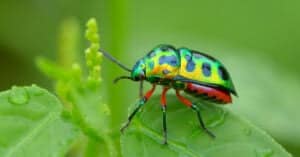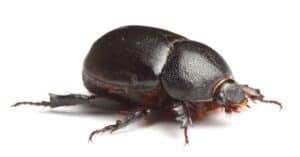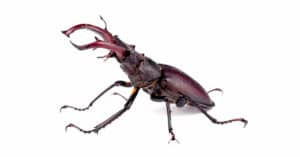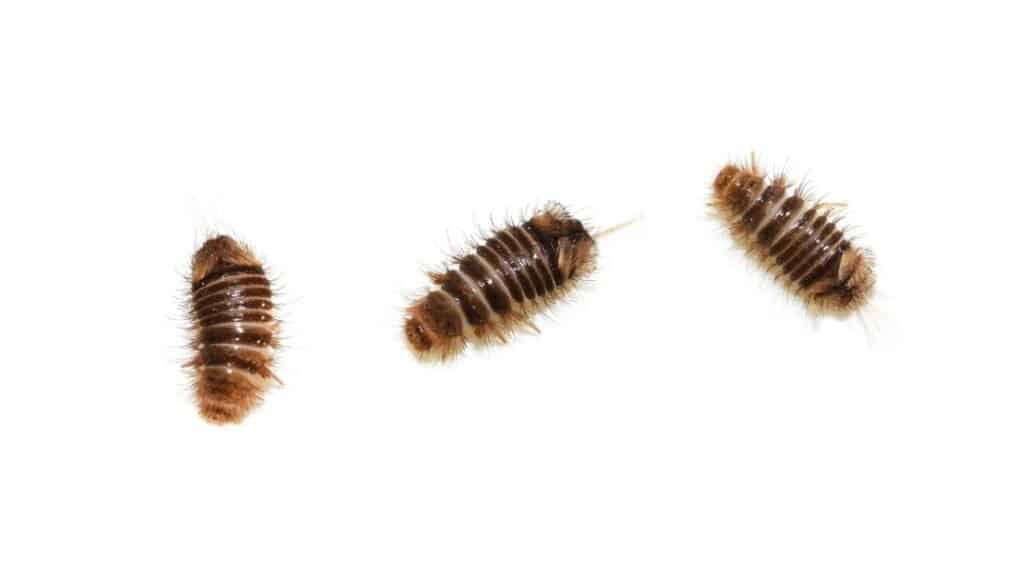
Carpet beetle larvae look like little fuzzy baby caterpillars
©iStock.com/HHelene
Carpet beetles are microscopic insects that can infiltrate your home if you aren’t careful. Carpet beetle larvae can do more damage than adult carpet beetles once they pupate. These carpet beetle larvae look nothing like their adult form either. So, how do you know how to spot them? Keep reading to learn more!
Are Carpet Beetles the Same As Bed Bugs?
Carpet beetles are sometimes confused with bed bugs, but they are quite different. Carpet beetles and their larvae can cause significant harm to the furniture in your home if not addressed. Carpet beetles and their larvae feed on natural fibers and can harm carpets, furniture, and clothing. They can also be found feeding on felt under furniture and lights.
Bed bugs are nocturnal and bite humans. During the day, they usually lurk near their host. This allows them to fit into small spaces. These are usually located on or around the bed in your room since this is a spot most people spend time in regularly.
Unlike bed bugs, carpet beetles do not bite since their mouths are designed to eat plants and other fibrous materials. However, both bed bugs and carpet beetles can produce welts. Bed bug rashes are caused by bites, whereas carpet beetle welts are caused by rashes due to an allergic reaction. This type of allergy to the carpet beetle and its larvae is much rarer than an outbreak from bedbugs. Therefore, if only one person in the bed has bites or a rash, this could be a sign of carpet beetles versus bed bugs in the home.
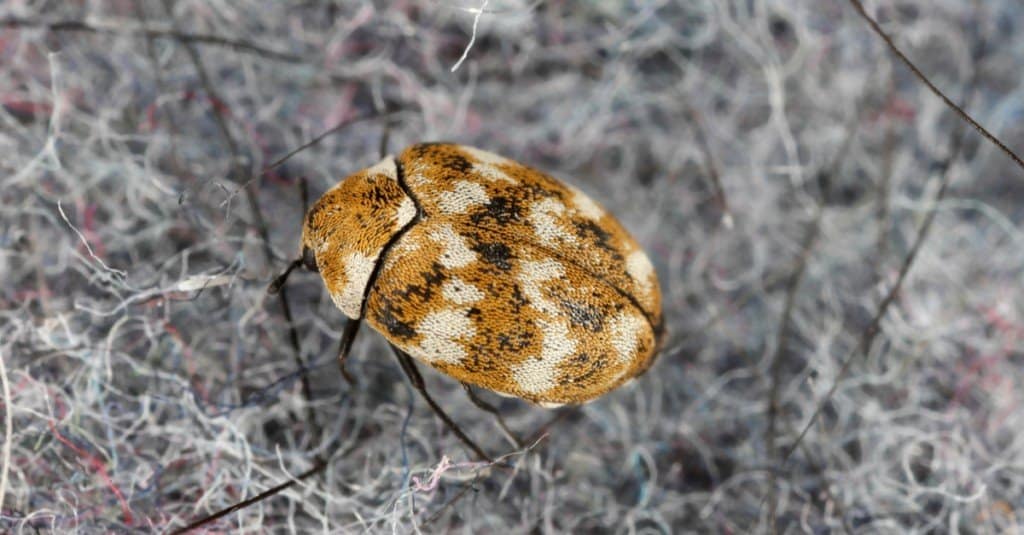
©Tomasz Klejdysz/Shutterstock.com
Do Carpet Beetle Larvae Bite? Can They Harm You?
Carpet beetle larvae cannot bite. As noted above, if you’re experiencing skin irritation from a carpet beetle its likely because of an allergy to their bristles.
Carpet beetles are not known to seriously harm humans, but they can eat through your clothes, rugs, and even your furnishings. They can also trigger an allergic reaction in certain individuals. Although they are harmless to people, they don’t bite or pose any other threat. Getting sick from a carpet beetle bite is unlikely, but this does not rule out the possibility of other health issues. There is a risk of cross-contamination when carpet beetles meet food.
Adults carpet beetles can get into food containers and lay eggs, which form into larvae. The larvae of carpet beetles can be pantry pests. Carpet beetle larvae eat a wide variety of pantry staples, including cereals and spices.
Have you ever opened a bag of flour and seen a colony of tiny larvae or insects? It’s hardly a shock. Insects like to eat what people eat! So, if you find “bugs” in your cereal, don’t freak out. The carpet beetle is just one of many known beetles to infiltrate the pantry. It is also worth noting that eating food that has been infested with pantry beetles or their larvae does not appear to have a detrimental effect on human health.
What Do Carpet Beetle Larvae Look Like?
Carpet beetle larvae look like small, fuzzy worms with stripes along their backs. Larvae can grow to be as long as 5/16 inch (a tiny fraction the size of the world’s largest beetles) and range in color from pale brown to black. Larvae are shiny, smooth, and rigid, and their bodies are covered with short, stiff hairs.
Carpet beetles go through three stages of development: eggs, larvae, and adult. Learn more about each stage by reading on.
Carpet Beetle Eggs
There are sixty eggs laid by the carpet beetle on average, and they hatch in 9 to 16 days depending on the temperature. Eggs of the carpet beetle are a whitish-cream color and are about ¼ mm in length. These oval-shaped eggs are easily identified by their spiny extensions on one end. Upholstered furniture, closets, rugs, and pantries are all places where they are likely to be found.
Carpet Beetle Larvae
Carpet beetle larvae start off white but progressively change to red or chestnut with brown stripes across the body as they develop. Carpet beetle larvae have dark hairs covering their bodies. Larvae of the black carpet beetle are smooth and hairless, and they might be brown or black. The larvae of common carpet beetles are red-brown in color and covered with dark hair, making them easy to spot. They remain larvae for 70 to 94 days before pupating. Before becoming adults, they spend 14 to 17 days as pupae.
Adult Carpet Beetles
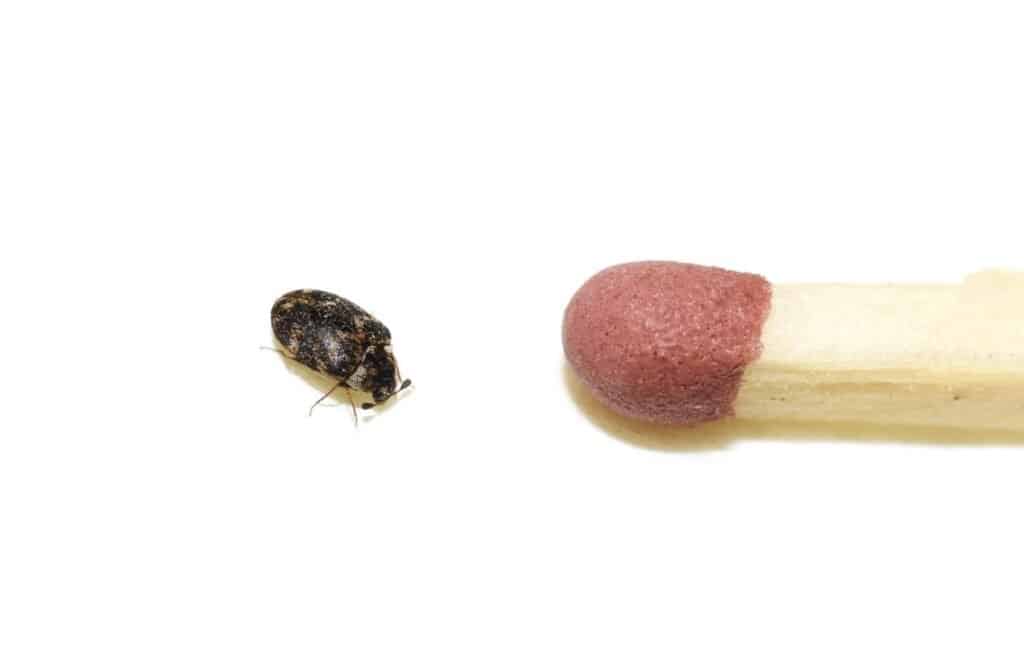
Adult size carpet beetle smaller than a match tip
©iStock.com/HHelene
Adult carpet beetles are around one-eighth- 3/16 inch in length. Carpet beetles have six legs and two antennae. Their bodies are spherical with wings. Adult carpet beetles can fly, allowing them easy access to our homes. Because these pests survive winter, they are motivated to enter a warm place every year. They come in a variety of colors. The common carpet beetle has colorful scales ranging from black to white, brown, yellow, and orange. The black carpet beetle is glossy black with deep brown legs. Adult carpet beetles live 4–8 weeks.
What Causes Carpet Beetle Infestations?
Carpet beetles are tiny bugs that live outdoors but can make their way inside your home and wreak havoc on certain items. When they are outdoors, carpet beetles eat on pollen and nectar. To get into your house, they can ride along with flowers or plants near the home. These tiny creatures may fly through tiny gaps in windows and doors because of their small size and attraction to light.
Once inside your home, carpet beetles can infest and repopulate inside a wide variety of home items. It is not rare for wool carpets, rugs, and clothes to be targeted. Animal hides may also attract some beetles. Carpet beetles also like flower arrangements and certain types of potpourris. Certain carpet beetle species will even consume dry dog food, noodles, wheat, flour, or cornmeal.
How to Prevent Carpet Beetles In The Home
There are several things you can do to stop carpet beetles from getting into your home.
Inspect Your Homes Exterior
Inspect the exterior of your property to ensure that all access points are sealed and that windows have snug-fitting screens. Consider installing a screened chimney cap if you do not already have one.
Reduce Amount of Plants
Reduce the number of flowering plants around your home to reduce the number of food sources for these beetles.
Opt for Bug Lights
Switching from regular white lights to yellow “bug light” bulbs will help reduce the likelihood of a beetle invasion.
Set Traps
Hang sticky flypaper strips near windows to keep adult carpet beetles out of your house. Put pheromone traps on windowsill and closet doors to deter carpet beetles from laying eggs if you’ve had multiple infestations.
Keep It Clean
Carpet beetles prefer to eat dirty clothes, so be sure to thoroughly clean your clothing before putting it away. You should store dry items like noodles and flour in airtight containers to prevent them from spoiling. Ensure that carpet beetles cannot gain a foothold in your home by dusting, sweeping, and vacuuming regularly.
The photo featured at the top of this post is © iStock.com/HHelene
Thank you for reading! Have some feedback for us? Contact the AZ Animals editorial team.



